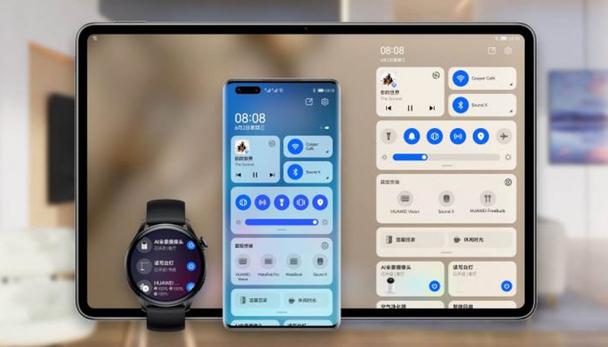It was presented during the last Huawei event, together with the new devices of the manufacturer; yet HarmonyOS has been able to get noticed even before becoming an integral part of the products of the Chinese giant. The alternative operating system for smartphones, tablets, smartwatches and other smart devices to Android is therefore a reality.
Accompanied by the tagline "One as All, All as One", HarmonyOS immediately showed its character thanks to an extremely wide versatility. In fact, the operating system is able to run easily on devices of all types, in addition to the canonical mobile phones - even in the older models - and wearables including the company's smartwatches and tablets. Of course, there are also similarities with Android 10, not counting the easter egg, especially in light of Huawei's confirmation of having used open source resources, including Linux, to quickly create the architecture of the software. All that remains is to see it in work to understand the differences and similarities.
HarmonyOS, how it works
The HarmonyOS operating system was created to integrate into every aspect of everyday life, from home to work, travel, health and sport. Once installed, it allows Huawei's tools to communicate with each other in a fluid way, creating a single large entity, the so-called Super Device system, with many facets, with the possibility of controlling it remotely with a single app capable of communicate with everyone substantially improving the user experience through a fluid and never fragmented interaction.

With the completely revolutionized control panel, you can connect the devices you need quickly. For example, to view a film from the smart TV on the smartphone screen, simply drag the icon of the first onto the second; if instead you want to use earphones - see the FreeBuds 4, you can move the relative icon to that of the phone with your finger: the video continues to play on the mobile while the audio is played from the connected wearables.
Then there is the Multi-Device Task Center, currently available on mobile phones and tablets, which allows apps to work on different objects without having it installed on each of them: less space occupied and greater ease of use. To these, then, must be added the widgets which, taking advantage of a light and immediate style, allow a more aware and simplified use of the entire system.
Last but not least feature is HiLink, which connects different elements of the smart home to live intelligently inside your own home. Thus it is possible to access the recipes, which can be consulted by placing the device on the oven (obviously switched off), up to constantly monitoring the preservation of food on the shelves of the refrigerators made by Haier.
HarmonyOS, who can use it
HarmonyOS will be installable on many Huawei-branded tools. There are over 200 smartphones that will receive HarmonyOS 2.0, from the most recent to those dating back to 2016 (although there are still doubts about the use of Google services on the older ones).
Among the devices compatible with HarmonyOS there are the P40 series, Mate 40 and 30, Nova 7, 6 and 5 and, even, the P10 dating back to February 2017. As if that weren't enough, the new devices released also enter the list during the event, such as the MatePad Pro tablet and Watch 3, the first smartwatch to support the new operating system, for a total of around 100 products dedicated to the many areas of everyday life.
